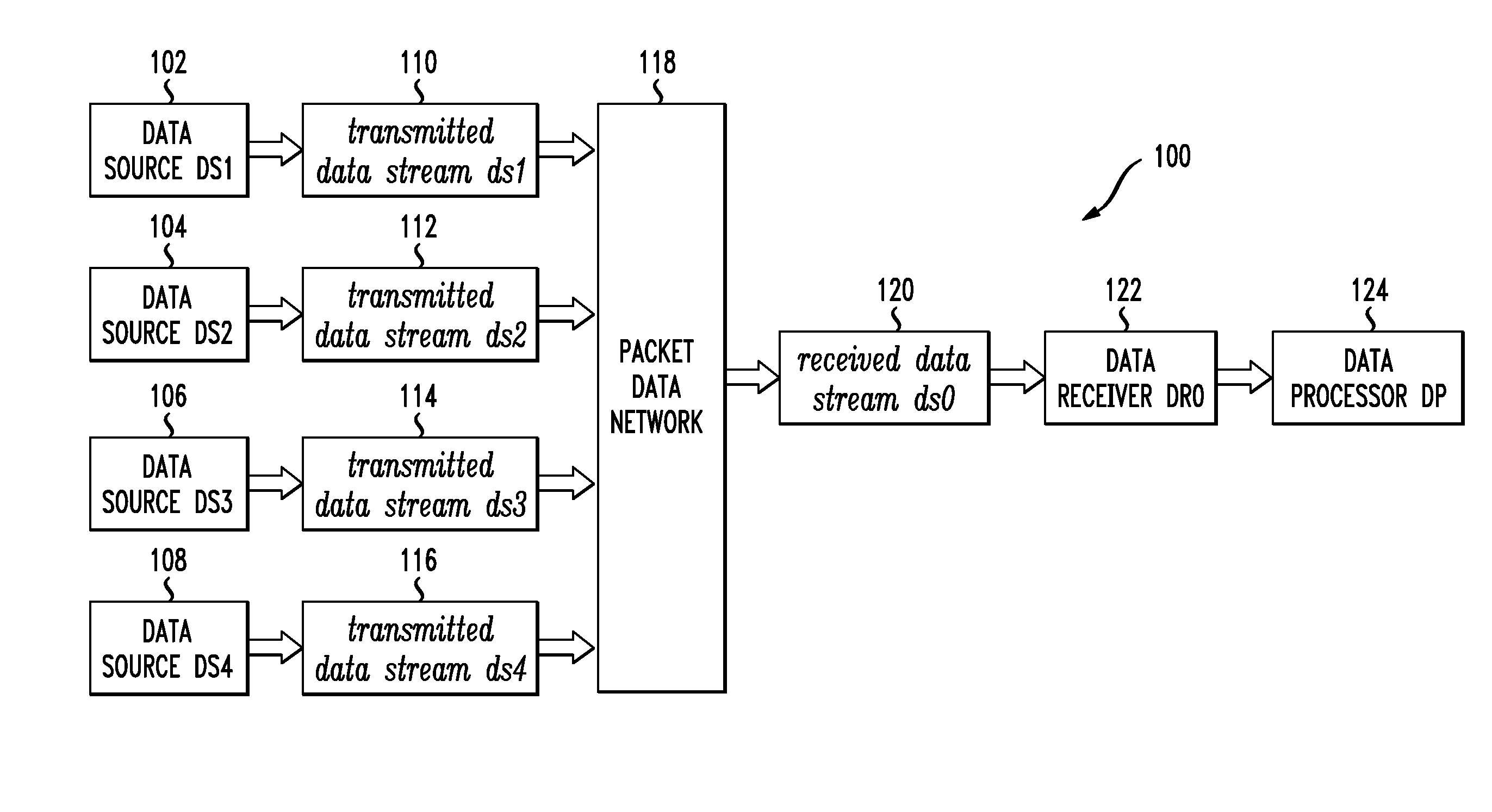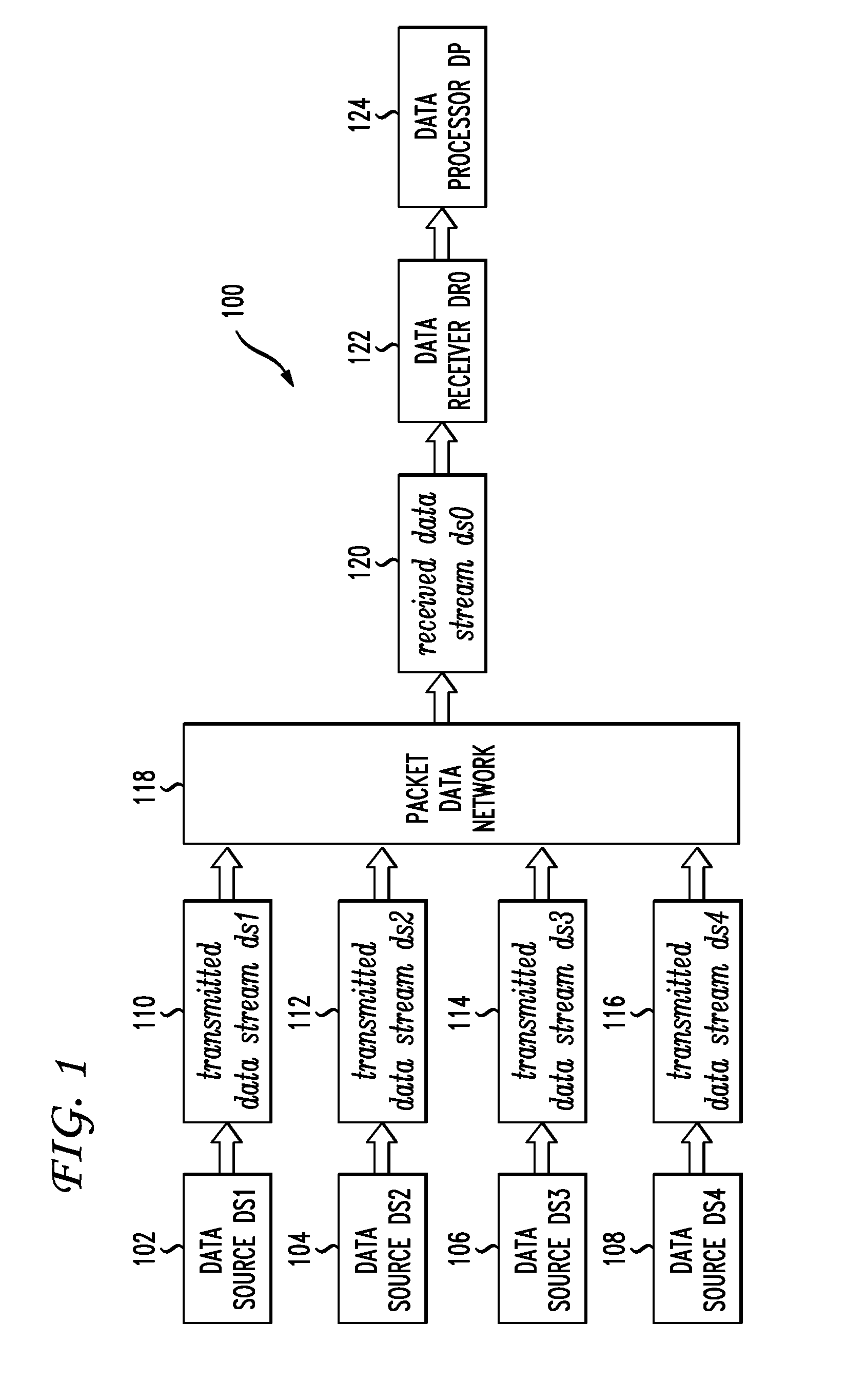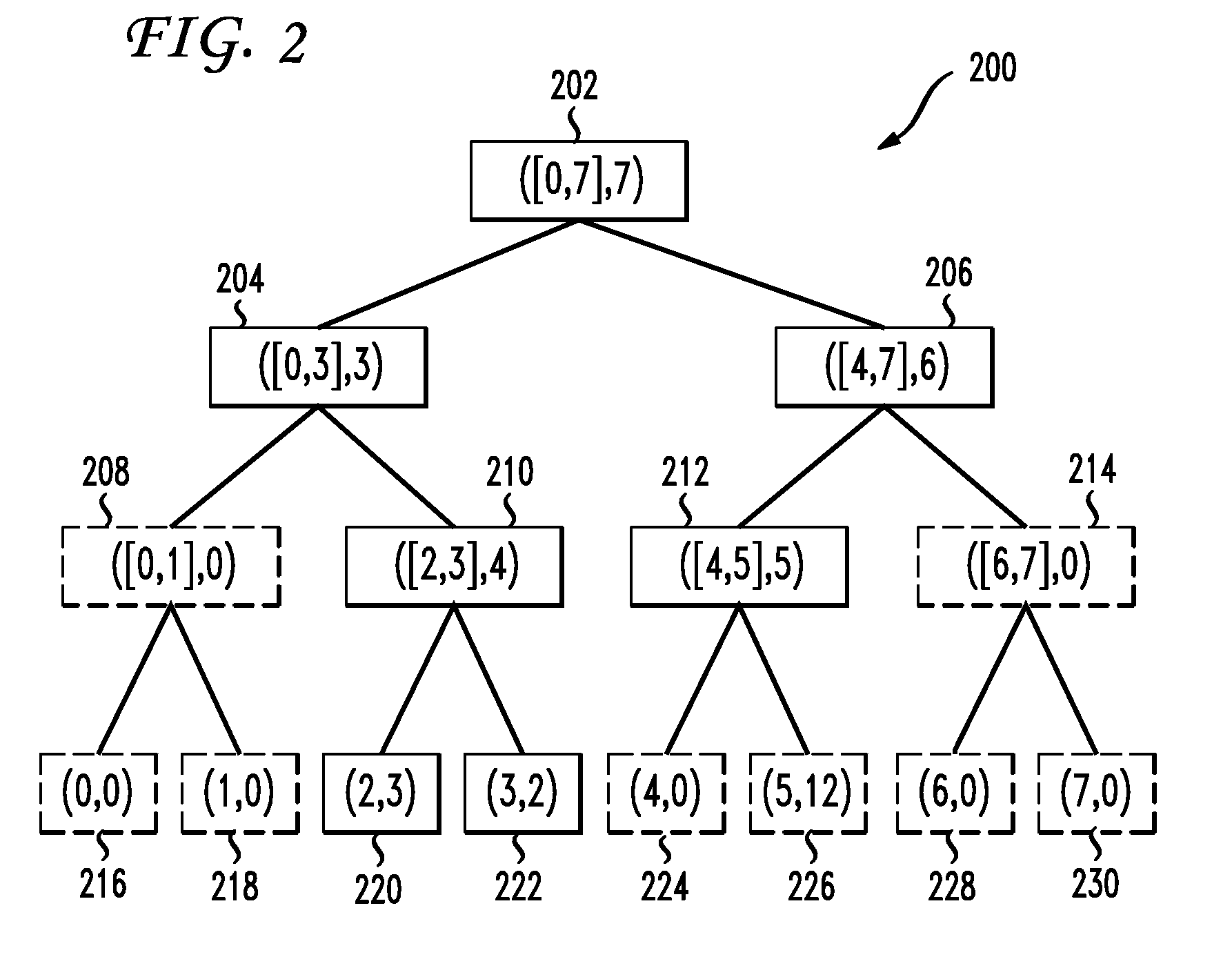Computing Time-Decayed Aggregates in Data Streams
a technology of data streams and aggregates, applied in the field of data processing, can solve the problems of inability to assume, data may arrive at a data receiver out-of-order, computationally intensive calculating aggregates from large volume unordered data streams, etc., and achieves the effect of reducing required computer resources, efficient calculation, and high weigh
- Summary
- Abstract
- Description
- Claims
- Application Information
AI Technical Summary
Benefits of technology
Problems solved by technology
Method used
Image
Examples
Embodiment Construction
[0019]FIG. 1 shows a high-level schematic of data measurement system 100. In this example, there are four data sources, DS1 102-DS4 108. Each data source generates an independent data stream. The transmitted data streams corresponding to data sources DS1 102-DS4 108 are transmitted data streams ds1 110-ds4 116, respectively. The transmitted data streams ds1 110-ds4 116 are transported across packet data network 118 to a single data receiver DR0 122. In general, there may be multiple data receivers. In general, a data receiver may receive multiple data streams from multiple packet data networks through multiple ports. The multiple received data streams, however, may be viewed as a single virtual received data stream. In the example shown, the transmitted data streams ds1 110-ds4 116 are combined into a single virtual received data stream ds0 120. The received data stream ds0 120 is processed by data processor DP 124. In FIG. 1, data receiver DR0 122 and data processor DP 124 are show...
PUM
 Login to View More
Login to View More Abstract
Description
Claims
Application Information
 Login to View More
Login to View More - R&D
- Intellectual Property
- Life Sciences
- Materials
- Tech Scout
- Unparalleled Data Quality
- Higher Quality Content
- 60% Fewer Hallucinations
Browse by: Latest US Patents, China's latest patents, Technical Efficacy Thesaurus, Application Domain, Technology Topic, Popular Technical Reports.
© 2025 PatSnap. All rights reserved.Legal|Privacy policy|Modern Slavery Act Transparency Statement|Sitemap|About US| Contact US: help@patsnap.com



